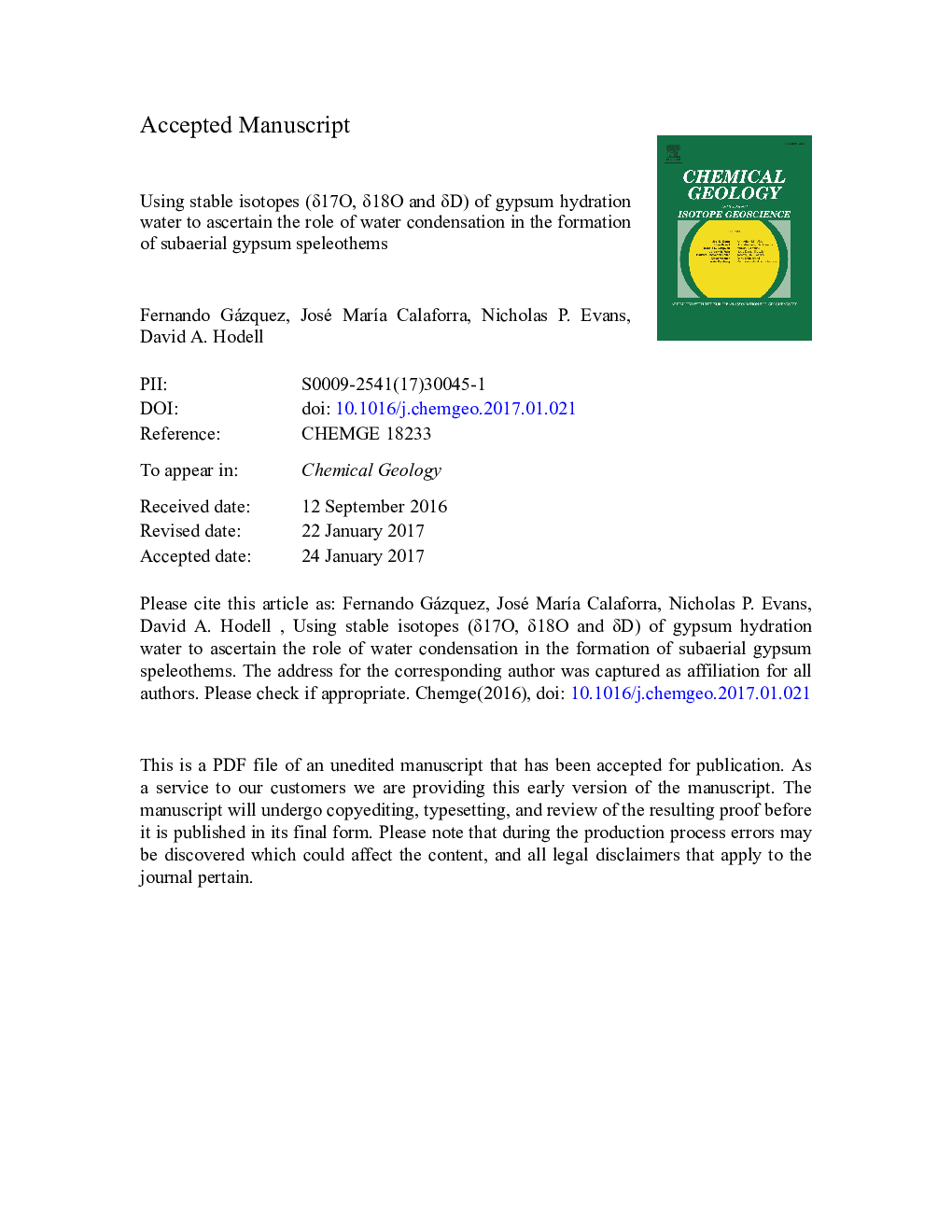| کد مقاله | کد نشریه | سال انتشار | مقاله انگلیسی | نسخه تمام متن |
|---|---|---|---|---|
| 5782968 | 1637522 | 2017 | 48 صفحه PDF | دانلود رایگان |
عنوان انگلیسی مقاله ISI
Using stable isotopes (δ17O, δ18O and δD) of gypsum hydration water to ascertain the role of water condensation in the formation of subaerial gypsum speleothems
دانلود مقاله + سفارش ترجمه
دانلود مقاله ISI انگلیسی
رایگان برای ایرانیان
کلمات کلیدی
موضوعات مرتبط
مهندسی و علوم پایه
علوم زمین و سیارات
ژئوشیمی و پترولوژی
پیش نمایش صفحه اول مقاله

چکیده انگلیسی
We analyzed the stable isotopes (δ17O, δ18O and δD) of gypsum hydration water (GHW) in a variety of speleothems, as well as condensation and infiltration waters in five caves of the semiarid gypsum karst of Sorbas basin (Almeria, SE Spain). Microclimate parameters (air temperature, relative humidity and effective condensation rate) were also monitored over an annual cycle. We found that the mother solution from which the majority of gypsum speleothems grow is composed of a mixture of condensation (~ 60%) and infiltration water (~ 40%) that undergoes evaporation. Although evaporation of infiltration water alone was thought to be responsible for secondary gypsum precipitation in vadose caves, our results suggest that condensation can be a major source of water for the formation of gypsum speleothems. The modelled d-excess and Î17O trajectories of water during the evaporative process confirm that the majority of speleothems precipitate from a mixture of condensation and infiltration water under relative humidity of 75-85%, similar to that measured in the cave atmosphere during winter. These findings have important implications for future studies of gypsum speleothems as paleoenvironmental archives.
ناشر
Database: Elsevier - ScienceDirect (ساینس دایرکت)
Journal: Chemical Geology - Volume 452, 5 March 2017, Pages 34-46
Journal: Chemical Geology - Volume 452, 5 March 2017, Pages 34-46
نویسندگان
Fernando Gázquez, José MarÃa Calaforra, Nicholas P. Evans, David A. Hodell,